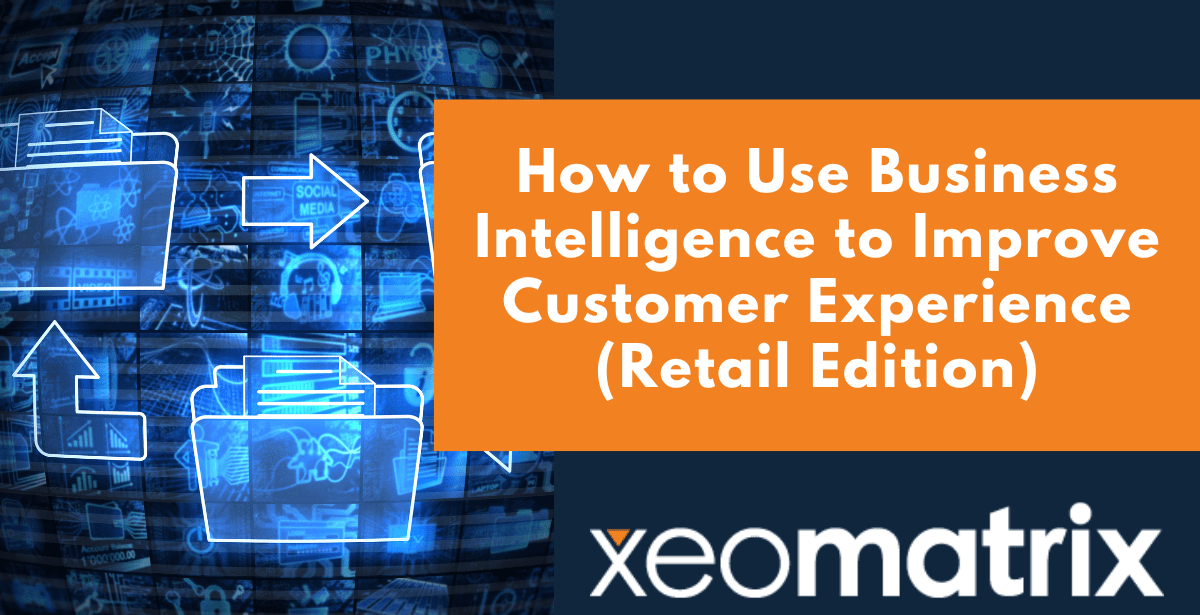Today’s shoppers expect personalized, frictionless, and relevant experiences at every touchpoint, whether online or in-store. And behind the best experiences? Data—and more specifically, business intelligence for customer experience.
At XeoMatrix, we help retailers unlock the full potential of their customer data. Here’s how retailers can use BI to better understand their customers, fine-tune their operations, and drive meaningful, measurable improvements in customer experience.
What Is Business Intelligence in Retail?
Business Intelligence refers to the tools, systems, and practices used to collect, analyze, and visualize data to make smarter business decisions. For retail companies, BI typically consolidates data from various sources, including POS systems, CRM platforms, inventory databases, websites, loyalty programs, and social media, to generate comprehensive customer insights.
When powered by AI, BI becomes even more impactful, shifting from simply telling you what happened (descriptive analytics) to forecasting what will happen (predictive analytics) and suggesting the best course of action (prescriptive analytics). This is where business intelligence for customer experience truly shines—helping retailers anticipate needs before customers even voice them.
1. Personalize Shopping Experiences Across Channels
Retailers can use BI to create highly tailored shopping journeys. By analyzing past purchase behavior, browsing patterns, demographic data, and even social media sentiment, retailers can surface hyper-relevant product recommendations, offers, and content.
For example, a fitness apparel brand may notice that a segment of customers consistently purchases high-impact sports bras. With this insight, the brand can promote new releases in that category to those specific shoppers via personalized email campaigns or app notifications.
Personalized experiences like these don’t just boost conversion rates; they make customers feel seen and understood, which builds lasting loyalty.
2. Segment Customers for Targeted Marketing
One-size-fits-all marketing is out. With BI, retailers can segment their customer base by behavioral traits, purchase frequency, location, demographics, or lifecycle stage.
Want to re-engage dormant shoppers? Use BI tools to identify customers who haven’t purchased in the last 90 days and send them a personalized reactivation offer. Trying to boost basket size? Analyze high-value customers’ buying patterns and build lookalike campaigns targeting similar profiles.
3. Predict and Meet Demand with Smarter Inventory
There’s nothing more frustrating for a shopper than finding a product out of stock. BI, especially when powered by AI, can analyze historical sales data, seasonality, market trends, and external variables (like weather or holidays) to forecast demand with precision.
This helps retailers reduce stockouts and overstocks, both of which erode customer satisfaction and profitability. According to a McKinsey study, AI-driven inventory optimization can reduce excess inventory by 35% and boost customer satisfaction by 20%.
4. Improve Customer Support with Proactive Insights
Business Intelligence can also optimize customer support. BI dashboards can reveal trends in support tickets, return reasons, and chatbot interactions to pinpoint common friction points.
Armed with this data, retailers can take proactive steps, like updating product descriptions to reduce confusion, retraining support agents, or improving FAQ content. AI-powered chatbots can also deliver instant, accurate assistance based on previous customer interactions, reducing wait times and improving satisfaction.
5. Monitor and Optimize Every Touchpoint
Every click, scroll, and tap is an opportunity to learn. BI tools like Tableau, Power BI, and Looker help retail leaders visualize performance metrics across touchpoints—whether that’s dwell time on a landing page or the repeat customer rate after a new loyalty program launches.
These visualizations help teams understand what’s working and what’s not, so they can iterate faster. For instance, if BI reveals that users are dropping off before checkout, a UX audit of the cart flow may uncover a fix that simultaneously improves conversions and customer satisfaction.
6. Strengthen Loyalty and Lifetime Value
The better you understand your customers, the more likely they are to stay with your brand. BI enables you to track loyalty indicators like repeat customer rate, Net Promoter Score (NPS), and customer lifetime value (CLV). You can then segment loyal customers and reward them with exclusive offers or early access to new products.
When customers feel valued—not just targeted—they’re more likely to remain loyal, reducing churn and increasing their long-term value to your brand.
Getting Started: Implementing BI in Retail
To begin using BI to improve customer experience, follow this roadmap:
- Audit your data sources – Centralize information from CRM, POS, eCommerce, marketing platforms, etc.
- Choose the right BI tools – Select user-friendly platforms that scale with your needs. XeoMatrix often recommends Tableau for powerful, flexible visualizations.
- Define your CX goals – Whether it’s reducing churn, improving NPS, or increasing personalization, be clear about what you’re aiming to improve.
- Build dashboards and reports – Track key CX metrics in real time.
- Refine and repeat – Use insights to inform decisions, then measure and iterate.
Ready to Transform Your Retail Strategy with Business Intelligence?
At XeoMatrix, we specialize in helping retailers harness the power of Business Intelligence to deliver better customer experiences, increase loyalty, and drive sustainable revenue growth. Whether you’re just beginning your BI journey or looking to level up your existing analytics tools, our team of experts is here to support you every step of the way.
We work with leading BI platforms like Tableau to create dashboards and reporting environments tailored to your retail operations. From unifying CRM, POS, and inventory data to designing visualizations that empower every team member—from executives to store managers—XeoMatrix helps you translate data into action.
To see how we’ve made an impact, take a look at our recent case study with Priority Power, where we built a customer-facing analytics portal that transformed how data is shared and consumed. While that project focused on energy insights, the strategy behind it—making data accessible, actionable, and tailored to the audience—is directly applicable to retail.
If you’re ready to improve customer experience and outpace the competition, contact us to schedule a consultation. Let’s build a smarter, more customer-centric future together, with business intelligence for customer experience at the core.

